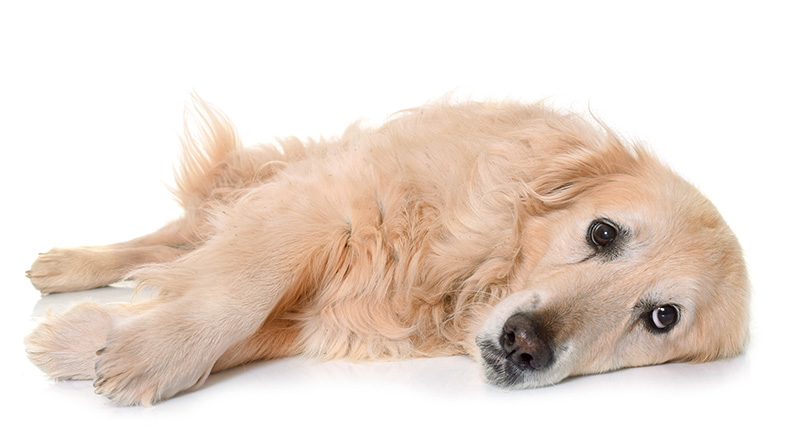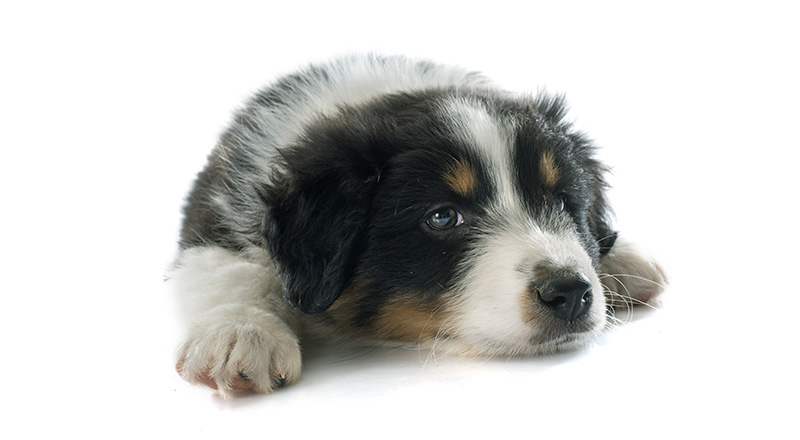8 Ways You’re Seriously Hurting Your Dog’s Health Without Realizing It
Published: Last updated: by Jessi Larson Affiliate Disclosure: We hope you love the products we've recommended! As an Amazon Associate we earn a small share from qualifying purchases.We all want the best for our dogs. After all, you wouldn’t be on this site if you weren’t a devoted pup parent! Taking care of a pet isn’t easy, however, and sometimes, despite our best intentions, we accidentally do things that are detrimental to our dog’s health.
If you do any of these on the list, don’t stress, it happens. I’ve been guilty of about half of them.
1. Being lazy with exercise
Exercising a dog is a lot of work. Point blank. We have to take our dog Toby on at least two long walks or hikes in the dog park a day, minimum. Usually, there are games of fetch and tug-of-war in between.
Life is busy and it’s easy to come home tired and not wanting to exercise or play with our pups. But, this is bad for your dog’s health. Really bad.
According to Pet Obesity Prevention, 53.8% of US dogs are overweight or obese. This extra weight can cause irreparable damage to internal organs, joints and bones, not to mention issues like diabetes, hypertension and respiratory compromise, says Pet MD.
To get your dog moving, start going on walks, even if they’re brief. Or if your dog is smaller and playful, encourage sessions of fetch and other fun doggy games. Even just a little bit of exercise can make a big difference.
We know the weather isn’t always conducive to playing outside. If that’s the case, try these creative ideas for exercising indoors.
2. Feeding them human food
Ugh, when a dog sneaks up and gives you the big saucer eyes while you’re eating, it is so hard to resist the urge to give them a little bite. But just don’t do it!
First off, this encourages the habit of begging for food, which is annoying and obnoxious for you, your family and your guests. If you do feed your dog (approved) human food, place a little bit in their dish so they know that’s where they need to eat their food.
Aside from that, there’s the health issue. Certain human foods are actually quite good for our dogs in smaller doses. But many can be harmful, like the obvious toxic and dangerous foods, but also high-fat fare that hurts their stomach and could also cause pancreatitis. And you can’t forget about foods with bones inside. These can cause choking or intestinal tearing. Yikes!
3. Not making socialization a priority
We can’t stress enough just how important it is to socialize your dog. This helps create a better-behaved pet who is more enjoyable to be around. It also is much better for their physical health. Let me explain.
Dogs who aren’t socialized well have a fear of new or unusual circumstances. This results in the release of adrenaline hormones that increase heart and respiration rates and blood pressure. Basically, it’s the whole “fight or flight” thing you’ve heard about, but for extended periods of time, depending on the situation, which isn’t good for your poor pup.
Also, if your dog doesn’t do well socially, it’s much harder to take them out for exercise and to the vet.
4. Going lax on training
Training your dog is a constant, exhausting process in the beginning. But the time and energy it will save down the road, for the rest of your dog’s life, is immeasurable. Not to mention that it benefits their health.
For starters, teaching your dog basic manners and providing physical and mental stimulation prevents anxiety and stress-related issues, according to renowned dog trainer Victoria Stilwell. Training also increases sociability, and as dog owners, we all know the importance of socializing our pets.
And finally, having a dog who listens and obeys can save them from potential dangers. For example, telling them to stop running when a car is coming or to step away from the spilled anti-freeze in the driveway.
5. Picking the wrong collar
Getting the right collar and leash helps both your dog and you. If a collar is too tight, it can rub against the skin and hurt them. Too loose and they can wiggle out and potentially run away and get into trouble.
This happened once when Toby was in what I’d call his teen stage – 8 months old and not quite a little puppy but certainly not a mature adult. When I stopped to get gas, he jumped out of the car. I quickly grabbed his collar, but since I had just adjusted it for his growing body and it was far too loose, he wiggled out and started to run and dart around the gas station parking lot. He could have easily been hit by a car! It was terrifying.
After that, I always made sure to do the trick vets teach: you should be able to fit one finger between the skin and the collar for small dogs and two for big dogs.
Sometimes, however, a collar isn’t the best option. That’s where a harness comes in. A harness is a better option for dogs prone to tracheal collapse and those that frequently escape their collar.
6. Neglecting their teeth
We just wrote a long post about taking care of your dog’s teeth that has tons of important info you should know. In a nutshell, Vetstreet reports that 85% of all pets have periodontal disease by age three. That’s alarming! But when you stop and think about it, how often do you brush your dog’s teeth? Or give them dental chews or another dog dental cleaner?
Brushing your dog’s teeth just once a week or even every other week goes a long way to help with their oral hygiene. We recommend getting a canine toothbrush and toothpaste set, and slowly easing into the habit of regular brushings.
7. Too much TLC
I am SO guilty of this when it comes to smaller dogs, like my brother’s adorable 8-lb Maltipoo, Theo. Throughout my life, I’ve only really been around larger dogs (and now have a 110-lb beast of a Lab), so when I try to play with smaller dogs, I’m gruff and heavy-handed. Not to mention the fact that smaller dogs are so darn cute and sweet; I want to just squeeze them and never let go.
But this is obviously not good for dogs who can’t handle it and can cause anxiety, discomfort and behavioral problems.
Kids are especially guilty of this. If you let young kids play with a dog, always, always watch them and be sure to teach them how to treat a dog properly.
How do you know if a dog doesn’t like the amount of affection they’re receiving? Watch their body language. Are they happy and wagging their tail or are they cowering with a look of fear in their eyes?
8. Skipping the vet
We know that taking your dog to the vet is a pain, not to mention expensive. But regular check-ups are so important for your furbaby’s health.
The vet can identify issues you might not even be aware of. Plus, they’ll make sure your dog’s weight is in check and their teeth are in good health.
We recommend finding a good vet you like and double checking to make sure they send you notifications when your dog is due for check-ups or shots.
And if your budget is tight and you’re not sure if you can make room for veterinarian expenses, don’t despair – there are a number of ways to still get care for your pup, like going to vet schools or getting help from local charities. Here’s a full list of ideas for affordable pet care.
Are you guilty of any of these? Or do you have anything to add to the list? We want to hear from you!





 Getting a New Dog?
Getting a New Dog?
2 Comments
That was very good advice. We’ve had success with harnesses for our pugs on walks and in the car. I’ve found that walking your dog is the biggest favor you can do for them.
My dog is diagnosed with enlarged heart yet still has fun and does what she always does, she has a bad cough and is a 13 year old bichon poodle mix. What should I do?